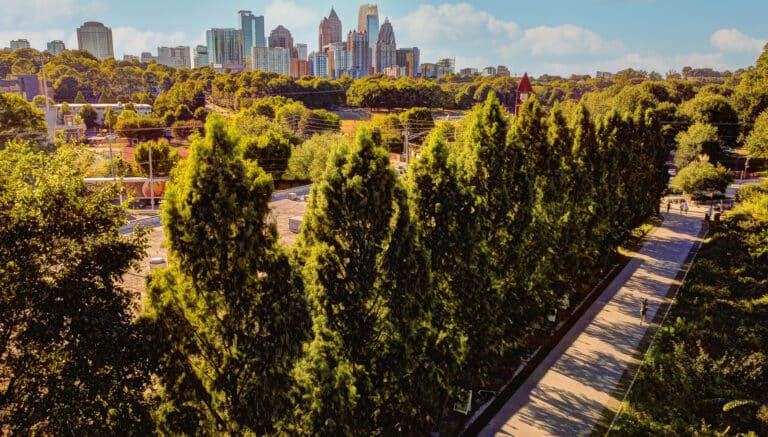Although most of the eastern United States was once covered by old-growth forest, most Americans have never been in old growth. Perhaps you are wondering whether you are one of the lucky few, remembering a time you stood in cool shade, feet on soft soil, and felt a sense of wonder.
You probably noticed the trees first. Old-growth forests have varied personalities shaped by their eldest members. Some are cathedral-like, with trees like towering columns. Others have trees that are stooped and twisted, telling a story of audacity and perseverance. And below the trees is a community even more diverse—rare plants, mysterious lichens, and creatures of all sizes. Be still; you will see quivers in the leaf litter and hear tiny rustlings behind crumbling bark.
Old-growth forests are towering not only in stature, but also in time. Their oldest trees may have grown for hundreds or even thousands of years, but the forests themselves stretch back even farther, to a time before remembering. If you could be still long enough, you would see seedlings grow into giants, die, fall, and soak again into the living soil where other seedlings now grow. I find comfort in their continuity. I find perspective by supposing that I may be long forgotten while these trees still stand.
If you look closely enough to see what is hidden in an old-growth forest’s hollow trees and burrows, your wonder may ripen into love. You will surely feel gratitude for the forest’s gifts—clean air, cool water, medicine, magic. You will ask, as you would of any beloved, what can I give back.
Now, there is an answer to that question.
The U.S. Forest Service recently published a groundbreaking proposal to amend management plans for National Forests across the country to create a consistent policy for conservation and proactive stewardship of old-growth forests. We’re thankful that the Biden-Harris administration is taking action and working to protect these incredible areas.
The proposal is an exciting step forward and, unfortunately, a necessary one: although the pace of old-growth logging slowed as these forests became increasingly rare, old growth continues to be logged on our public lands. Throughout the country, and especially in the East, they are still being clearcut in service of timber quotas. For the relatively few acres we have left, this new proposal will promote stewardship of old growth for its own sake—not as a source of timber.
But if future generations are going to experience the magic of old growth, the Forest Service must go further. Old-growth forests are living ecosystems, not museum pieces. Even with added protections, we will continue to lose more of them to wildfire, disease, and storms driven by climate change. Any policy to conserve old-growth forests must therefore recruit future old growth, too.
That’s where mature forests come in. These older-but-not-quite-old-growth forests play a key role in the ecosystem, replacing old growth that has been affected by fire, disease, or logging. It will take decades or even centuries for today’s mature forests to fully reach old-growth condition, but in the meantime these aging forests increasingly filter our air and water, provide habitat for rare animals, and absorb climate-warming carbon pollution.
But too often, these forests aren’t allowed to grow into old growth. A newly published Forest Service report shows that logging remains a top threat to mature forests, especially “even-aged” logging, ubiquitous in the East, which removes most or all the forest’s trees.
So, here is something small you can give back: submit a comment supporting the recently announced plan to conserve today’s old growth, and tell the administration that our healthiest, most resilient mature forests should be able to become tomorrow’s old growth.
To be clear, this won’t be “hands-off” management. Some mature forests will still require thinning and tending to become healthy old growth, and plenty of mature forests will still be available for timber management. But we won’t succeed without a clear strategy to ensure that enough mature forests and the right mature forests are stewarded to become old growth.
Forests are patient. A young tree can wait decades for a neighboring elder to fall, giving it the light it needs to reach the canopy. But they have waited long enough for us to make this decision. We must return the great forest, and we must begin now.
Sam Evans is a Senior Attorney at the Southern Environmental Law Center and leader of SELC’s National Forests and Parks Program.
Photo by Jerry Greer








